Facebook Product Feed
In today’s digital era, social media platforms have become powerful channels for businesses to showcase and sell their products. Among them, Facebook Shopping has emerged as a prominent player, offering a vast user base and extensive advertising opportunities. However, to maximize your success on Facebook Shopping, it is crucial to optimize your product feed. We will delve into the significance of optimizing your product feed for Facebook Shopping and highlight some key optimizations that can help drive better results.
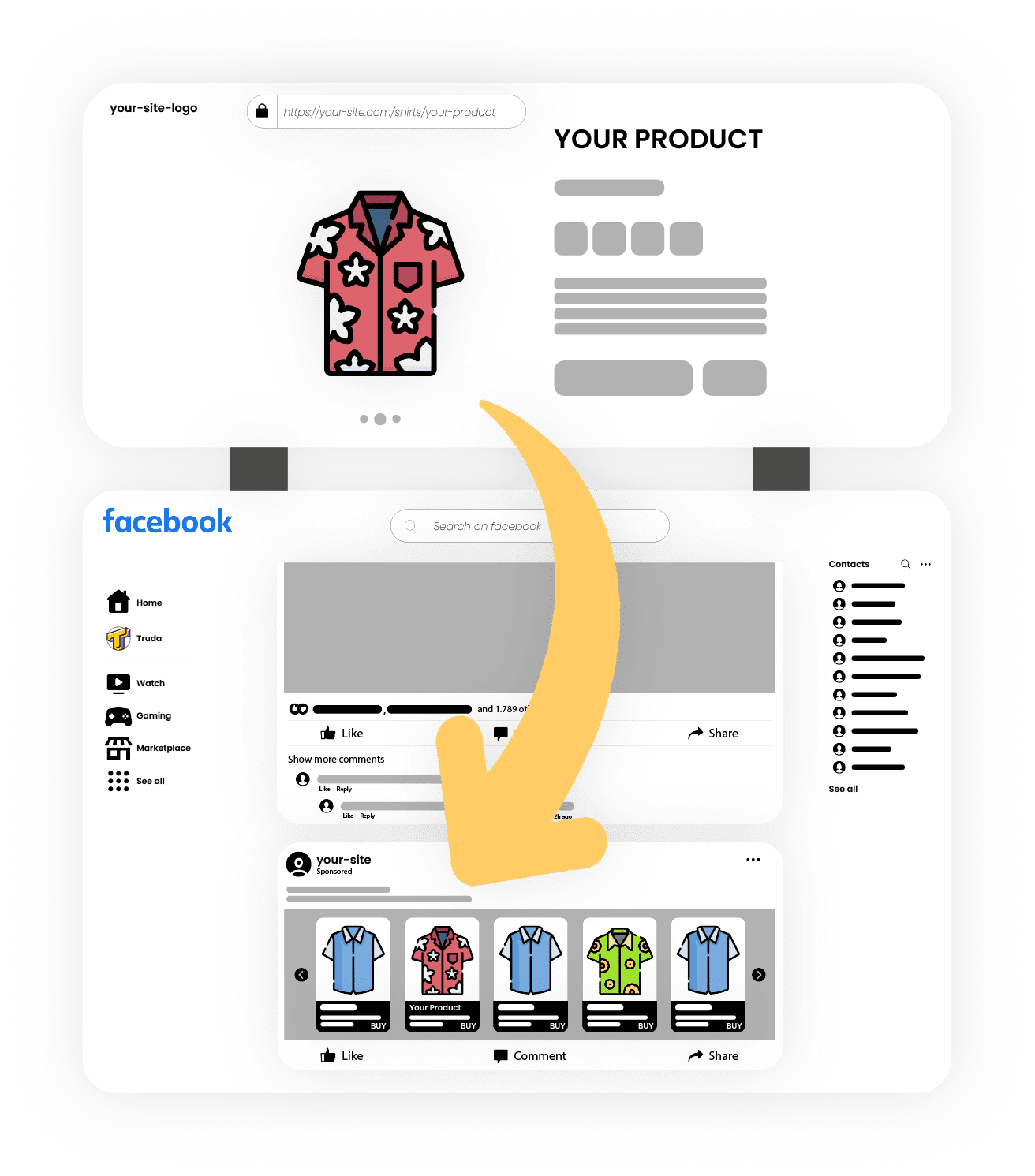

Facebook Shopping Feed Management
Enhanced Visibility and Reach
Optimizing your product feed for Facebook Shopping greatly enhances your visibility and reach. By structuring your feed with accurate and comprehensive product information, you increase the likelihood of your products being discovered by potential customers. Facebook’s algorithm relies on detailed product attributes to match user queries, making it essential to provide complete and accurate data.
Improved Ad Performance
A well-optimized product feed directly impacts the performance of your Facebook Shopping ads. When your feed contains high-quality images, clear product descriptions, and relevant attributes, your ads become more compelling and engaging. This leads to higher click-through rates, improved conversion rates, and ultimately, increased sales.
Mobile Optimization
Mobile devices play a significant role in e-commerce, and Facebook Shopping is no exception. With the majority of users accessing Facebook through mobile devices, it is crucial to optimize your product feed for mobile viewing. This includes using high-resolution images, clear and concise product titles, and easy-to-read descriptions. By providing a seamless mobile shopping experience, you increase the chances of users making purchases directly from their smartphones or tablets.
Dynamic Remarketing
Optimizing your product feed enables dynamic remarketing on Facebook. With this powerful feature, you can show personalized ads to users who have previously interacted with your products or visited your website. By incorporating dynamic product attributes like price, availability, and relevant recommendations, you can create tailored advertisements that are more likely to resonate with your target audience, resulting in higher conversion rates and repeat purchases.
Accurate Targeting and Personalization
Facebook Shopping relies on your product feed to understand your offerings and target relevant audiences. By optimizing your feed with specific attributes such as gender, age range, and interests, you can ensure that your ads are shown to the most relevant users. The more precise your targeting, the higher the probability of reaching potential customers who are genuinely interested in your products, leading to improved campaign performance and return on investment.


Join us in our journey!
In the search of new ways to grow your business.
Our purpose is to label every online product in the world, propelling businesses towards greater profitability and success. By equipping businesses with effective labeling strategies, we empower them to thrive in the fiercely competitive digital realm. The result? Heightened customer loyalty, increased conversion rates, and amplified profitability.
Facebook Shopping Feed Optimisation
Optimizing a Facebook shopping product feed offers a multitude of benefits for businesses looking to maximize their online presence and drive sales. Firstly, it ensures accurate and up-to-date product information, enhancing the overall customer experience. By organizing product attributes, such as titles, descriptions, and images, businesses can effectively showcase their offerings, leading to increased visibility and customer engagement. Moreover, optimizing the feed improves the targeting capabilities of Facebook’s advertising platform, allowing businesses to reach their desired audience with precision. This, in turn, boosts the return on investment by driving relevant traffic to the website and generating higher conversion rates. Furthermore, an optimized feed enables businesses to take advantage of dynamic remarketing, creating personalized ads based on user behavior and preferences, leading to higher customer retention and repeat purchases. Ultimately, optimizing a Facebook shopping product feed empowers businesses to stand out in the competitive e-commerce landscape, increase brand awareness, and drive revenue growth.
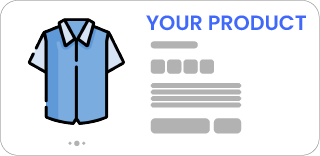

Accurate Product Titles
Use descriptive and keyword-rich titles
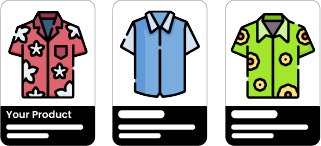

High-Quality Images
Use high-resolution images that showcase your products
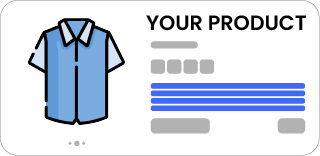

Detailed Descriptions
Write clear, concise, and compelling product descriptions
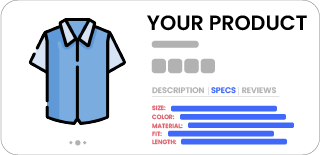

Complete Product Attributes
Provide comprehensive and accurate product attributes
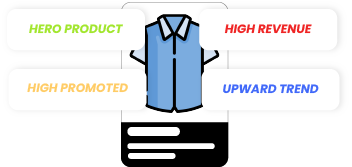

Custom Labels and Product Categories
Utilize custom labels and product categories


Regular Feed Updates
Keep your product feed up to date
Non-optimizable fields
There is specific information and particular fields of data that Facebook requires for your product feed. Some of which have narrow options and offer less scope for optimization
ID
You need to add a unique ID for each product you upload
Availability
You have a maximum of 100 characters in which to let your customers know if the products they are seeing are available to buy
Condition
Your options are: “new”, “refurbished”, or “used”
Price
Mark how much your items cost and the relevant currency (i.e. USD)
GTIN, MPN, or brand
This is all about helping to identify your products:
- GTIN: Global Trade Item Number
- MPN: Manufacturer’s Part Number
- Brand: The brand name for the item
Link
This is the link that directs your users to where on your online store they can buy the product(s) listed on your product feed
Optimizable fields
However, there are a number of fields of data that you can optimize, in order to ensure you are making the most of your product feed for Facebook
Description
Your product descriptions consist of 5000 characters, presenting a valuable chance to create well-optimized content. The goal is to effectively promote the items listed in your product feed, and there are various steps you can follow to achieve this:
- Emphasize the key features of your products.
- Provide a clear explanation of how your product works.
- Understand your target audience and tailor your writing to their needs.
- Utilize language that is concise, precise, and devoid of unnecessary clutter.
- Incorporate keywords naturally into your content.
- Ensure your content is unique, setting it apart from others.
Title
When it comes to your product title, you’ll find that some of the aforementioned principles apply as well, such as incorporating keywords naturally and writing concisely and directly. However, there are additional optimization strategies you should implement:
- Anticipate and address potential customer questions regarding your products.
- Begin the title with the product features.
- Include the brand or designer name.
- If relevant, incorporate the model name.
Image link
Optimizing the images in your product feed requires considering their size. Facebook emphasizes two crucial aspects:
- Image ratio – 1.91:1
- Image size – 1,200 x 628 pixels
However, optimizing your images goes beyond size and ratio alone. There are several other measures you can take, including:
- Utilizing alt attributes.
- Selecting the appropriate file type.
- Testing your images with your customers to ensure optimal performance.
Accurate Product Titles
Use descriptive and keyword-rich titles that accurately represent your products. This helps users understand what the product is at a glance.
Incorporate relevant information such as brand, color, size, and other distinguishing features to provide users with specific details.
Avoid misleading or exaggerated claims in the titles, as this can negatively impact user trust and engagement.
High-Quality Images
Use high-resolution images that showcase your products in the best possible light. Clear, visually appealing images attract attention and encourage clicks.
Follow Facebook’s recommended image dimensions and guidelines for image quality and content to ensure optimal display across different devices.
Consider using lifestyle images or product videos to provide a richer visual experience and give users a better sense of the product’s features and benefits.
Detailed Descriptions
Write clear, concise, and compelling product descriptions that highlight key features and benefits.
Use persuasive language and focus on the unique selling points of your products to differentiate them from competitors.
Incorporate relevant keywords to improve searchability and optimize your product descriptions for both users and search engines.
Custom Labels and Product Categories
Utilize custom labels to create specific groups or segments within your catalog. This allows for targeted advertising and better campaign management.
Use custom labels to label products based on performance, seasonality, margin, or any other criteria relevant to your business.
Assign accurate and relevant product categories to help Facebook understand your products better. This improves the platform’s ability to match user queries with your products and enhances the overall user experience.
Complete Product Attributes
Provide comprehensive and accurate product attributes, including price, availability, variations, sizes, colors, and any other relevant information.
Ensure that the information aligns with the actual product to avoid customer dissatisfaction or confusion.
Accurate product attributes enable Facebook to match user queries with your products, improving the relevance of your ads.
